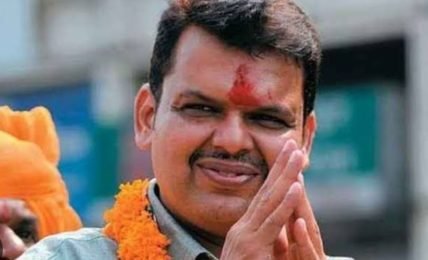Ramdhari Singh Dinkar wrote in his poem Rashmirathi. “Jab Naash Manushya Par Chhata Hai, Pehle Vivek Mar Jaata hai.” The lines aptly describe the results of the Delhi Elections 2025, where even the AAP Convenor and Ex-CM of Delhi, Arvind Kejriwal, lost the election. “Modi Ji Iss Janam Mein Toh Aap Aam Admi Party Ko Nahi Hara Sakte, Aapko Doosra Janam Lena Padega” were the exact words of Kejriwal throwing light on his over-confidence. Corrupt activities worth crores, Sheeshmahal, the failed Delhi Model, the flawed freebie model, and the anti-Hindu stance of the AAP led to its doom. The party spending crores on advertisements fooled the voters of Delhi and Punjab and tried to expand their vote base in Goa and Gujarat. Suppose you ever get a chance to visit the streets of Patel Nagar, Nafjargarh, Okhla, and other nearby areas, you will be shocked to see the piles of garbage everywhere, stinking water coming out of taps, and sewerage pipes getting leaked now and then. The voters were fed up with the blame game between the CM Office and the LG. The excise policy scam also made inroads into the campaign when voters started speaking vocally about the rise in several liquor shops and how it was affecting the Delhiites in general. The BJP which was struggling in the past few years because of infighting, and lack of proper election management and strategy in the previous Delhi elections, pulled off a targeted campaign this time. The focus was on the swing voters who voted for the BJP in the Lok Sabha elections while preferring to vote for the AAP in the Assembly Elections. Talking about the micro-management, all eyes were on the role of the RSS in the Delhi elections. According to a report, more than 50,000 meetings were set up by the RSS to address the issues of the common voters. The strategists of the BJP seem to have left no stone unturned to tap into all the mico and mager communities of the UT. Now, all eyes will be on Punjab as well where the elections are due in 2027. Punjab is also one of the states where the BJP has struggled quite hard to make a base while the Congress lost its core vote bank to the AAP. Will a triangular fight between the BJP, AAP, and the INC lead to a change in Punjab, will be worth noticing. But let’s have a look at the narratives and strategies that led to the BJP’s thumping victory in Delhi.
The Number Game
The BJP’s vote share increased by a margin of 6.86% (38.7% in 2020 elections whereas 45.56% in 2025) whereas AAP’s vote share decreased from 53.8% in 2020 to just 43.57%. The INC again scored a duck in the game while improving its vote share by a mere 2%. The AAP was already worried about the swing voters which the BJP was already tapping along with the increase in the vote share of the INC. Data suggests that if the INC had received 10% or more of the vote share, the AAP’s tally would have gone down more heavily than the current tally.
Local Level Narratives Gave A Better Push To The BJP
The BJP in the last 5 years struggled hard to take the issues of liquor scam, Jal Board scam, Mohalla Clinic Scam, and other inefficiencies of the AAP to the common voters. Just 4 months before the elections, the party seems to have focused on targeting the party on local issues based on assembly constituency wise. The party discovered that it needed to reconnect the voters facing issues of garbage, ill-maintenance of roads and parks, irregularity in implementing the freebies, etc. The first step was the launch of a constituency-wise chargesheet in which the BJP highlighted the corruption and issues faced by voters in the AAP-led constituencies. The chargesheet pamphlets were distributed by a door-to-door campaign. At the same time, the state team of the BJP started attacking the AAP over issues like Yamuna, Excise Scams, Air Pollution, etc. The AAP started tackling all the claims of the BJP by announcing new schemes after every 3-4 days. It seems that the party took a cue from the MahaYuti’s strategy in Maharashtra where the coalition launched “Ladki Bahin Yojjana” along with announcing dozens of schemes passed in the cabinet meetings. The AAP convenor to consolidate the women voters of Delhi announced the “Mahila Samman Yojana” and started with the registration process. At the same time, the AAP announced sops for the “pujaris”, “Granthis” and other sections of society as well. An announcement after every 3-4 days showed the desperation of the AAP to win the elections. But what did not work for Kejriwal was the non-implementation of all these schemes on the round. He placed the whole blame on the LG for not letting him implement the schemes which in return also irritated a section of the voters.
Tapping Into The Caste Politics Of Delhi
The BJP was a bit confident to consolidate the Jats as well as Gujjars who make up 8.2% of the total population as the party recently won the Haryana elections. The Jat community is dominant in 10 seats of Delhi – Mehrauli, Najafgarh, Bijwasan, Palam, Matiala, Vikaspuri, Nagloi Jat, Narela, Rithala, and Mundka. In the 2015 and 2020 assembly elections, the AAP won all 10 seats. The responsibility to consolidate the jat voters was given to heavyweight BJP leaders like Parvesh Sahib Verma, Kailash Gehlot, and Raghuvinder Shaukeen. Arvind Kejriwal started his outreach toward the Jat community by organizing a closed-door meeting with the community representatives at his residence followed by a letter to Narendra Modi asking for the inclusion of the Jat community in the central OBC list, paving the way for reservation for Jat students in Delhi University. The BJP did not let Kejriwal make this a huge issue and rather started doing closed-door meetings with the Khap leaders residing in Delhi. According to a report, Surender Solanki, head of the influential Palam Khap announced support to the BJP along with 360 villages in the UT. These villages hold an impact on around 30-31 constituencies of Delhi and now when the results are announced, it is visible that the Jat community rallied behind the BJP heavily. The Axis-My India also suggested that around 60% of the Hat community for the BJP.
Just like the Jat, the dominant Purvanchali voters also seem to reject Kejriwal’s promises and go along with the Modi Ki Guarantee. The BJP successfully made the Yamuna issue a big trouble for the AAP and even Arvind Kejriwal showed his non-seriousness towards the issue when he said in a podcast that cleaning Yamuna will not fetch him votes. It is reported that the BJP made a small team of 100 influential leaders from Uttar Pradesh and Bihar to consolidate the Purvanchali voters. Harish Dwivedi, two-time BJP MP from Basti, Uttar Pradesh was given the responsibility of implementing this strategy and all these 100 influential leaders were mapped to 50 ACs.
The exit polls also highlighted that even the Uttarakhandi voters are voting for the BJP. There are approximately 30 Lakh pahadi voters in Delhi residing in Laxmi Nagar, Vinod Nagar, Patpaarganjh, Burari, East Delhi, Jahangirpuri, Karol Bagh, RK Puram, Karawal Nagar, Badarpur, Palam and Dwarka. To woo these voters, Uttarakhand CM Pushkar Singh Dhami along with more senior leaders of Uttarakhand BJP came to Delhi to campaign. Also, since CM Dhami had announced to implementation of UCC in Uttarakhand, that was a strong message to the Delhi voters as well that the BJP if it comes to power in the UT will also implement the same law.
The Fight For Jhuggi-Jhopdi Voters
Popularly known as the JJ factor, the AAP’s vote share in the JJ areas was 66% in 2015 whereas that of the BJP was 21%. In the 2020 assembly elections, the vote share of the AAP among the slum voters came down by 5%, taking the tally of its vote share to 61% while that of the BJP increased to 33%. The slum voters are majorly found in Narela, Adarsh Nagar, Wajirpur, Model Town, Rajendra Nagarm Sangam Vihar, Badarpur, Tughlakabad, Ambedkar Nagar, Seemapuri, Babarpur, Trilokpuri, Kondli, Okhla, Motinagar, Shalimar bagh, Matiala and Kiradi. In December 2024, the BJP leaders spent the night in 1,194 slums across Delhi as a part of a five-month-long slum outreach campaign. Under the leadership of Delhi BJP President Virendra Sachdeva, the campaign aims to connect with slum residents and address their issues. Some leaders from BJP, including National General Secretary Dushyant Gautam, Leader of Opposition Vijender Gupta, and MPs such as Ramveer Singh Bidhuri, met people in different slums in East Delhi, Greater Kailash, and Paharganj. Sachdeva claimed that this is the approach through which the BJP wants to make the lives of slum dwellers better once it comes to power in Delhi.
Apart from all the above-mentioned factors and narratives, the announcement of tax relief in the Budget 2025 was the final nail in the coffin as it proved to be the best decision to attract the middle-class voters of Delhi, especially the swing voters. The over-confidence within the AAP as well as its cadre was visible throughout the campaign whereas for the BJP, it was a do-or-die situation. PM Modi’s appeal to the Delhi voters to give him a chance to serve the Delhi voters can also be seen as one major factor that worked for the BJP. Now, when the BJP has won in Delhi, there are very high chances for the party to start strengthening in Punjab as well. One can expect AAP MLAs and leaders in both Delhi and Punjab to start leaving the AAP and join either the INC or the BJP. Thus, for Kejriwal, it’s not just an election loss but also a time to save his cadre from a series of defections that might follow next.
DISCLAIMER: The author is solely responsible for the views expressed in this article. The author carries the responsibility for citing and/or licensing of images utilized within the text.



